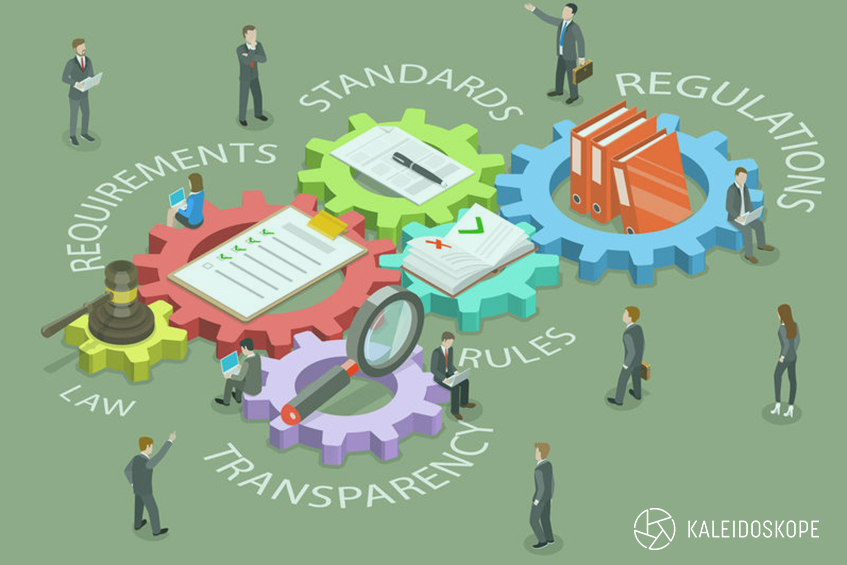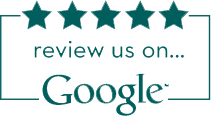Not Just “Nice”, But Necessary: Why Accelerated Learning is A Must Across Industries

Wouldn’t it be nice if everyone who sat through your training sessions actually remembered your training? Thing is, what people are supposed to learn during training often isn’t just “nice-to-have”, but in some cases, literally a matter of life or death.
We’re not merely discussing training involving high-risk dangerous chemicals, hazardous minerals, or heavy equipment. When you train your staff to do any sort of work, everyone is affected—from the leadership to the chap in the backroom, from the customer-facing team to your customers, themselves. And that could literally mean life or death, or existence of your organisation.
Accelerated Learning or AL is an approach to learning that ensures that people actually learn what they’re supposed to at every training session.
Now, we’re not just talking about being able to parrot back what a trainer says—AL is all about high-impact, high-engagement and results-focused learning that ensures trainees remember what they learn, and apply what they learned when they leave the classroom. And that’s something that applies to any industry, including yours.
To better appreciate the vital difference Accelerated Learning can make in specific industries, let’s take a closer look at AL at work in training for some industries.
AL Enhances Compliance Comprehension

Compliance focuses on making sure that an organisation’s processes are in line with regulations—its own as well as the governing authority. Companies in every industry, in every country, have regulations they need to comply with. This is very typical in some highly regulated industries, like finance or healthcare.
Compliance training generally involves bringing teams up to speed not just with the legal aspects of their company’s operations, but also with the company’s own policies covering standards, conduct, security and ethical issues. In some cases, Compliance training is a critical part of an organisation’s international certification bodies, such as the ISO or TUV.
A key part of Accelerated Learning is its emphasis on connecting trainees to the learning and requiring them “teach back” what they’ve learned, AL in Compliance Training enhances the trainees’ understanding and application of Compliance in their individual roles.
Naturally, now that there is a connection, it effectively improves the way Compliance is observed during the trainees’ day-to-day.
AL has its roots in the Oil and Gas industry

Evolving environmental compliance regulations, high stakes, high-risk investments, and expansion into new markets, constant innovations in engineering and technology are all a part of the volatile oil and gas industry. AL was born in the oil and gas industry, because of the need to provide effective, efficacious and continual training for teams to ensure not just Compliance but Occupational Safety.
The BP Deepwater Horizon oil spill incident is a prime demonstration of the immense, and tremendous implications of a mistake, an error in this industry. An oil spill because someone was careless when operating the safety system, the rig operator made a mistake, or a foreman missed a step in the safety practices. Just the devastating environmental impact already meant more than 8000 species of living things were affected, and its impact
Accelerated Learning is a critical approach to training in the oil and gas industry, and is an integral approach that is widely adopted in technical, and safety trainings.
Michael Killingsworth first brought AL to American Airlines. Having achieved significant business results, he moved to the Royal Dutch Shell to develop their learning strategy in 2002, eventually become VP of Learning and Organizational Effectiveness.
AL has been embedded into the design and delivery of Shell’s safety learning processes ever since. The company has now trained hundreds of safety professionals in AL and high impact facilitation around the world and has become a benchmark for safety across the industry.
“Death by Powerpoint” can be literal

On 26 April 2016, a delivery of 1.5 tons of steel mesh makes its way to a construction yard in Singapore. The load needs to be lifted from the truck using the truck crane and lowered to the ground. Two workers rig up the load which starts to buckle as it comes down. One of the workers reaches up to straighten it, putting himself in the line of fire. The corroded lifting chain fails and the load gives way, crushes him to death. The workers didn’t know how to lift safely.
When we talk about “Death by Powerpoint”, we snigger and generally compare notes on how boring the training sessions were. In construction safety, however, “Death by Powerpoint” can be literal.
Imagine a team of folks struggling to stay awake as a presenter puts them through several hours of slides on rigging and lifting, confined space entry, chemical management, working at height etc, etc.
The next day they are in the field entering a tank …and if they cannot remember their training from the previous day, the results can be fatal.
That is why the Accelerated Learning is a key part of the training approach where training isn’t just a must, but are often repeated at regular intervals, so trainees not only need to learn and apply but also need to be constantly, and consistently reiterated.
AL uses physical activities, creativity, colour, images, creating a training environment that fully involves the learners in their own learning experience. Tapping into our innate potential for learning in a way that traditional learning methods cannot, AL is an obvious and powerful learning approach for safety.
Reinforcing Training in Finance with AL?

It may not be so obvious that AL can be applied to money management. However, in recent years, financial and political scandals, compliance and ethical issues have dominated many headlines globally.
A recent and ongoing political scandal involving more than USD700m, a political leader, several global banks, a complicated, and tangled web weaved from compliance failures, ethical obligations, transparency and illegal dealings have further raised questions, and shifted the spotlight yet again on the importance of compliance functions in the international financial sector.
Financial training initiatives typically cover a range of regulated Compliance training, with emphasis on ethics, recognising red flags on money laundering, client verification or risk assessment. These trainings are typically required by regulatory authorities to be repeated, refreshed and reiterated.
The subject matter is very technical, often repetitive, and more often than not, guilty of “Death by Powerpoint”.
AL is a very effective tool, and skill to empower Compliance trainers with.
AL is learner-drive, activity-based, and can be easily embedded into the delivery of very technical compliance programmes. Content can be adopted, and adapted to be “learner-driven”, engaging, and highly interactive, and overall, to create a learning programme that is simulating, applicable, and that significantly improves memory and retention.
Discover how AL can make a lifesaving difference in your organisation’s performance.
No matter what industry you’re in, or how insignificant it may seem, the work you do touches lives and changes them. Whether that change is for good or ill might well depend on how well you train everyone on your team. Why wait for the unthinkable, or unforeseen to drive that point home? The next avoidable incident or accident could happen to one of your own—staff, stakeholders, or customers.
Our trainers at Kaleidoskope have spent more than 20 years helping teams as well as the trainers who train them to enhance their professional facilitation expertise. David Turberfield, the lead facilitator for our AL course, is a certified Acclerated Learning Facilitator with 25 years of experience as a high-impact facilitator, professional coach and speaker primarily in Asia.
Get in touch with us to give your training initiatives the Accelerated Learning advantage, today.
Leadership Training
- Business Storytelling – A Critical Skill For Great Leadership
- Want to make history as a leader? Try studying these great leaders from history
- Solution Focused Leadership Coaching
- Leading the Way for Leaders: How Your Leadership Can Continue to Evolve
- How to Manage a High-Performance Team Made Up of Different Personalities
- Have You Mastered the 4 Leadership Fundamentals?
- Do You Practise Adaptive Leadership? Your Organisation Needs You To
- Why A Good Leader Needs To Understand Business Agility
- 20 Qualities of a Good Leader in Times of Change (A Checklist)
Corporate Training
- Why is your training, boring?
- Learning Initiatives at Work CAN Lead to A Great ROI. Here’s How
- Corporate Training Doesn’t Seem to Be Working? You Need an HPLJ Approach!
Facilitation Training
- Facilitate a High Impact Training Course with Accelerated Learning
- Accelerative Learning – A Better Return on Training Investment (Part 1)
- Accelerative Learning – A Better Return on Training Investment (Part 2)
- Accelerative Learning – A Better Return on Training Investment (Part 3)
Virtual Learning
Start Your High-Performance Learning Journey
WITH KALEIDOSKOPE NOW!
This blog post is the first of three posts on Accelerative Learning (AL) theory. In Part 1, we look at the different types of learning story and introduce the concept of Accelerative Learning.
Accelerative Learning – A Better Return on Training Investment (Part 1)

This blog post is the first of three posts on Accelerative Learning (AL) theory. In Part 1, we look at the different types of learning story and introduce the concept of Accelerative Learning.
The learning story (Part 1)
Picture the scene. A presenter is at the front of the room, 40 minutes into a session about ethical compliance obligations, literally talking to his 35th PowerPoint slide. There are a few people at the front fighting to stay awake, most are on their phone or tablet and one or two at the back are literally nodding off. The presenter speeds up in a bid to get it over and done with. At the end of the session, there is muted applause and a collective rush for the door. The company can tick the box on ethics training – but did anyone really learn anything? A day or two later and most of the participants probably won’t even remember having been in the room and will determine to avoid the next session like the plague.
Unfortunately, this scene is playing out in corporate meeting rooms every day all over the world and it begs the question, what’s the point? If people are leaving training sessions, going back to work and continuing to do the same things in the same way as they did before they went in, then it really is just a waste of time and money. It is estimated that businesses worldwide spend $350B each year on training (Administrate 2018), not including the cost of participant hours. What percentage of that spend is really having a material impact?
It doesn’t have to be like this. There are tried and tested learning approaches that can and do increase learning effectiveness, ensuring a significant return on a company’s investment in training. One particularly powerful, well researched and documented approach is Accelerative Learning (AL).
What is Accelerative Learning (AL)?
Accelerative Learning (AL) has been described as the most advanced teaching and learning method in use today (CAL 2019). It is a powerful approach based on over 50 years of brain research, designed to enhances both the training design and the learning process. When applied correctly, it has been proven to significantly increase learning effectiveness whilst saving time and money.
Based on the way that human beings naturally learn, AL taps into our innate potential for learning in a way that traditional learning methods cannot. It does this by fully involving the participant in their own learning experience using physical activity, creativity, colour, images, music and the whole training environment.
AL is described as activity-based and learner-driven (ABLeD), where learners discover and create their own knowledge through meaningful activities and authentic experience. The trainer becomes “the guide on the side” as opposed to “the sage on the stage” (CWW 2013), facilitating the learning process and delivering content only to supplement the learners’ own process of discovery and creation.
The learning story (Part 2)
Picture the scene with the application of AL. Three groups of participants have been busily discussing a scenario where a company employee is facing an ethical dilemma that looks like it could be in breach of the law. They’ve studied the legislation, figured out the relevant clauses, prepared their feedback and are about to present. The brief requires the first group to feedback with a poster and no words; the second group has to create a song; and the third group has to act it out. The room is tense with excited anticipation…
They leave the room not only having actively studied the content but also having seen, heard and felt it through the media of three different learning modalities. In the process, they have built relationships, broken down barriers, had a lot of fun and are ready to take what they have learned back to the workplace and sign up for the next session.
In Part 2, we explore the history of Accelerative Learning, how it is defined and the key principles for designing an AL program. If youhave questions about anything you’ve read so far, ask us here.
Sources and References:
Bathla, Som (2018). “The Magic of Accelerated Learning: Discover Strategies for Effective Learning, Improved Memorisation, Sharpened Focus and Become an Expert in Any Skill You Want”
Conners, K (2018). “Accelerated Learning: Advanced Strategies for Improved Memorisation, Effective Listening and Increased Productivity”
Kinnard, Karen (2007). “The Accelerated Learning Cycle: Are You Ready to Learn? Am I Ready to Lead?“
Labiosa, Libyan; Atkisson, Alan (1996). “Accelerated Learning – The value of playing games, singing songs, listening to stories and how learning is improved by the power of suggestion”
Labiosa, Libyan; Randig, Sinéad; Cassone, Philip (2018). “The Accelerative Learning Road Less Travelled”
McKeon, Kevin J. (1995). “What is this Thing Called Accelerated Leaming?” Training and Development Journal, Vol. 49, No. 6.
Nitsche, Pearl (2017). “Nonverbal Classroom Management – Group Strategies that Work”
Schornack, Gary (1996). “Accelerated Learning Techniques for Adults – An Instructional Design Concept for the Next Decade”
Smith, Alastair (2016). “Accelerated Learning in Practice”
Wilkens, Jonathan (2017). “Accelerated Learning: Accelerated Learning Techniques, Memory Techniques, Improve Your Memory, Learn More in Less”
Zemke, Ron (1995). “Accelerated Leaming: madness with a method,” Training and Development Journal, Vol. 32, No. l 0
Additional Information:
(CAL 2019). The Center for Accelerated Learning – blog for center for accelerated learning
(ICAL 2019). International Centre for Accelerative Learning (ICAL) – visit for more information
(Administrate 2018). Administrate Group – Click here to learn How the World spent 359 Billion on trainings
(Watson 2013). CCW Consulting LLC – learn more about consulting
Leadership Training
- Business Storytelling – A Critical Skill For Great Leadership
- Want to make history as a leader? Try studying these great leaders from history
- Solution Focused Leadership Coaching
- Leading the Way for Leaders: How Your Leadership Can Continue to Evolve
- How to Manage a High-Performance Team Made Up of Different Personalities
- Have You Mastered the 4 Leadership Fundamentals?
- Do You Practise Adaptive Leadership? Your Organisation Needs You To
- Why A Good Leader Needs To Understand Business Agility
- 20 Qualities of a Good Leader in Times of Change (A Checklist)
Corporate Training
- Why is your training, boring?
- Learning Initiatives at Work CAN Lead to A Great ROI. Here’s How
- Corporate Training Doesn’t Seem to Be Working? You Need an HPLJ Approach!
Facilitation Training
- Facilitate a High Impact Training Course with Accelerated Learning
- Accelerative Learning – A Better Return on Training Investment (Part 1)
- Accelerative Learning – A Better Return on Training Investment (Part 2)
- Accelerative Learning – A Better Return on Training Investment (Part 3)
Virtual Learning
Start Your High-Performance Learning Journey
WITH KALEIDOSKOPE NOW!
Start Your High-Performance Learning Journey
with Kaleidoskope NOW!
Call Us Or Message Us on Whatsapp
Or Fill Out the Form Below

